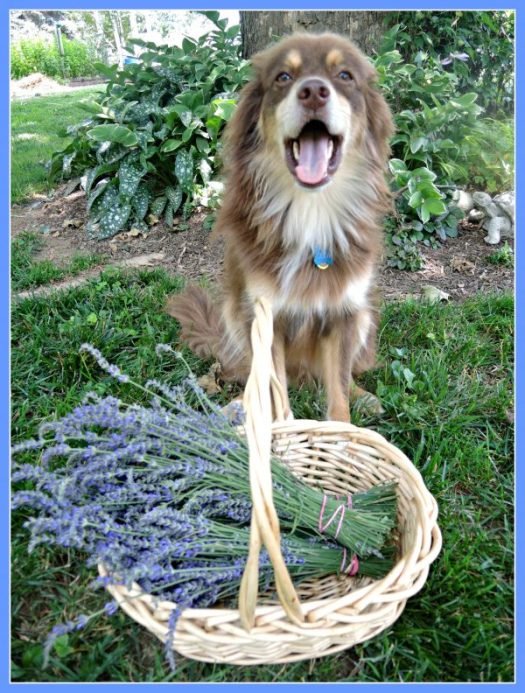Aralia ‘Sun King’ brings a burst of gold and chartreuse to the shade garden. Its fresh lime hues and graceful, shrubby form make this perennial a focal point and a perfect complement to other shade-loving plants.
The dynamic foliage boasts three seasons of interest, along with white flowers in the summer and dark berries to follow. Pollinators and birds appreciate the food sources, and humans do, too, in the edible leaves, shoots, and roots of Aralia cordata. Mostly, though, this variety rules in color and form as a spectacular ornamental and easy-care garden specimen.
Overview
|
|
|
What is ‘Sun King’ Aralia?
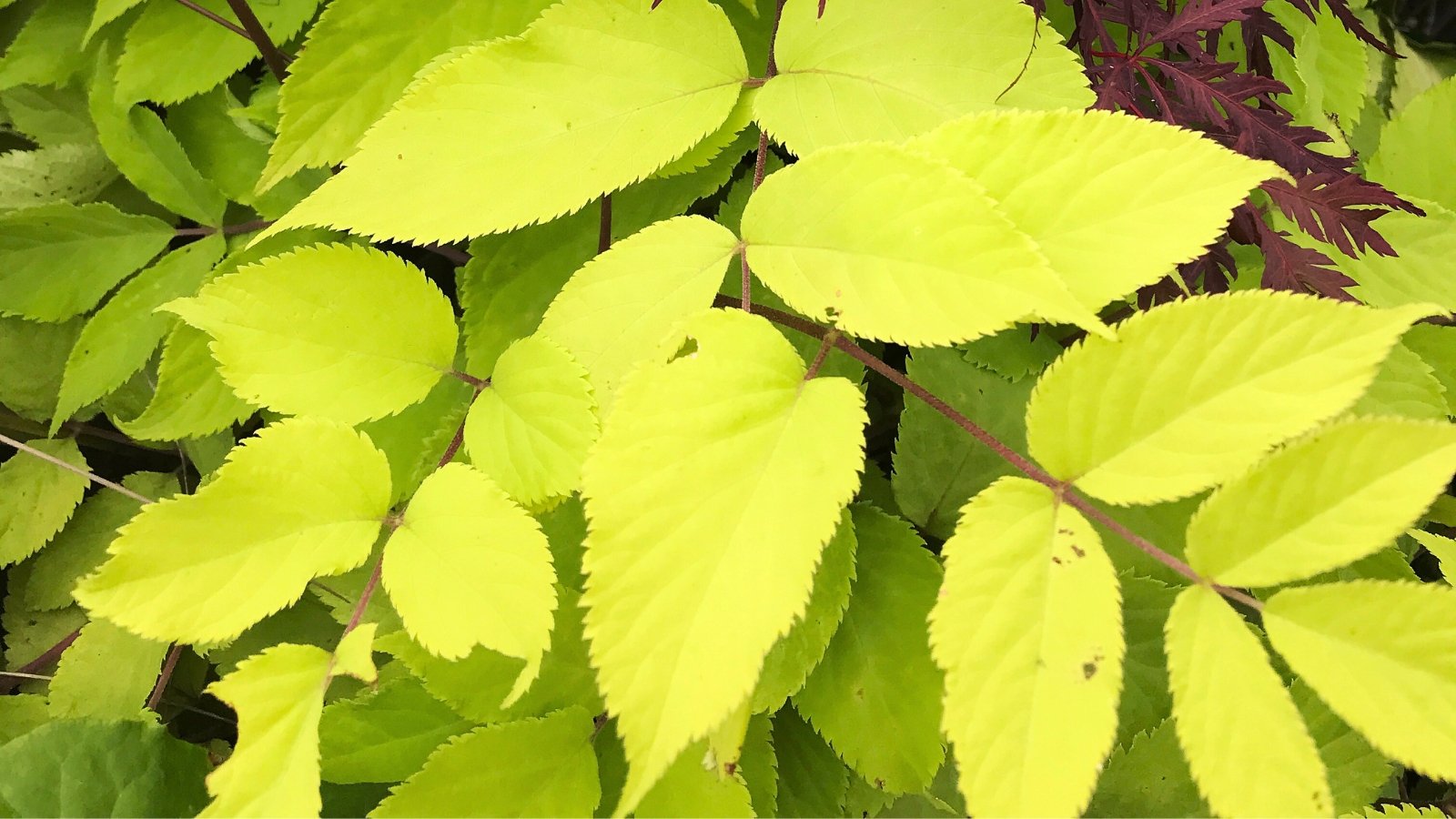
With a supreme golden glow, ‘Sun King’ aralia is highly ornamental in foliage color and form. A cultivar of Aralia cordata, this herbaceous perennial thrives in partial shade with the presence of a small shrub. Plants reach an average of three feet high and wide but with the potential to reach up to six feet. Aralia cordata spreads through rhizomes and is a clump-forming perennial with a slight, loose spreading habit.
The genus Aralia contains nearly 70 species, including evergreen and deciduous trees, shrubs, and perennials like ‘Sun King’. Aralia racemosa and Aralia californica are native to North America, while many species occur naturally in Asia. Some are invasive in the United States, like A. elata, commonly known as the Japanese angelica tree, a multistemmed deciduous tree with impressively wicked thorns on canes.
This aralia is a well-behaved, noninvasive plant with lush foliage. The bright green and gold tones and long, compound leaves give plants a tropical look, though they’re tough and cold hardy. ‘Sun King’ makes an excellent focal point or mass planting in woodland plantings, rear borders, pollinator gardens, Asian-inspired gardens, naturalistic arrangements, modern gardens, and moist areas. Pair it with other shade-loving perennials like hosta, heuchera, tiarella, Japanese painted ferns, astilbe, epimedium, and Solomon’s seal for gorgeous layered combinations.
Aralia cordata is an award-winning perennial plant for its stellar garden performance in ornament and reliability. In 2012, it received the International Hardy Plant Union Outstanding Plant Award. The Perennial Plant Association named it the Perennial Plant of the Year in 2020 to recognize its wide range of growing climates, low maintenance requirements, multi-season appeal, and pest and disease resistance.
Characteristics
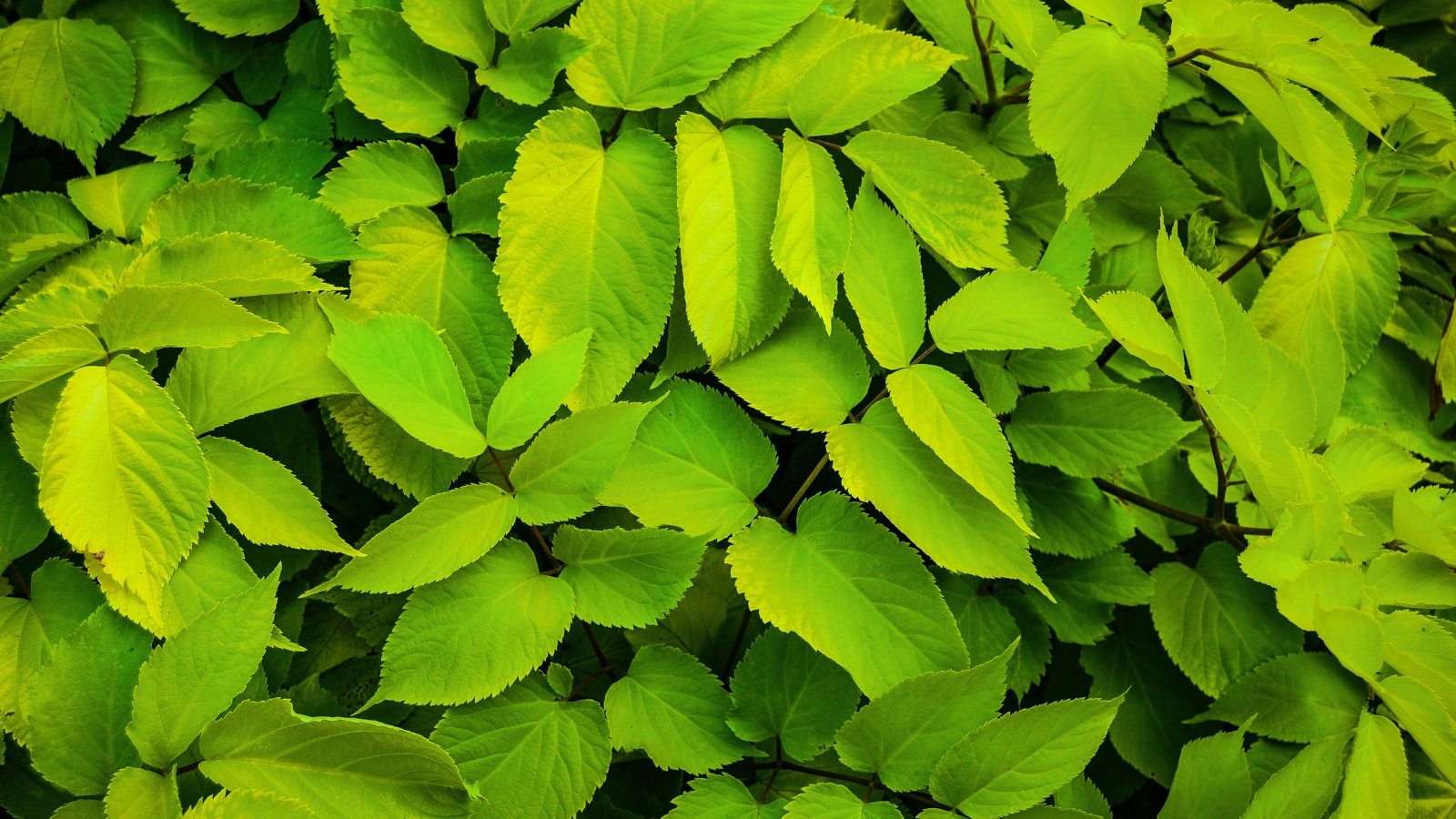
‘Sun King’ aralia features finely-toothed compound leaves that reach up to three feet long (each leaflet at 6 inches long) for a graceful, frondlike appearance. The foliage is yellow-gold with exposure to partial sunlight and turns deeper chartreuse-lime in more shade. Reddish-brown stems contrast the bright gold leaves.
In addition to unique leaves, umbles of tiny, starry white flowers emerge on two-foot stems in late summer through early fall. The blossoms are a pollinator favorite and attract honeybees, butterflies, and other beneficial insects.
After flowering, plants produce dark purple-black berries. Birds love them, though they’re inedible for people.
Aralia enters dormancy during the winter, where it dies back to the ground to reemerge in spring. It grows quickly in a single season and with little gardener intervention. These carefree plants resist deer, rabbits, pests, and diseases and tolerate shade.
Aralia cordata is commonly called Japanese spikenard, udo, and mountain asparagus. Young shoots are a delicacy with a taste of lemony asparagus. Roots and leaves are also edible.
Native Area
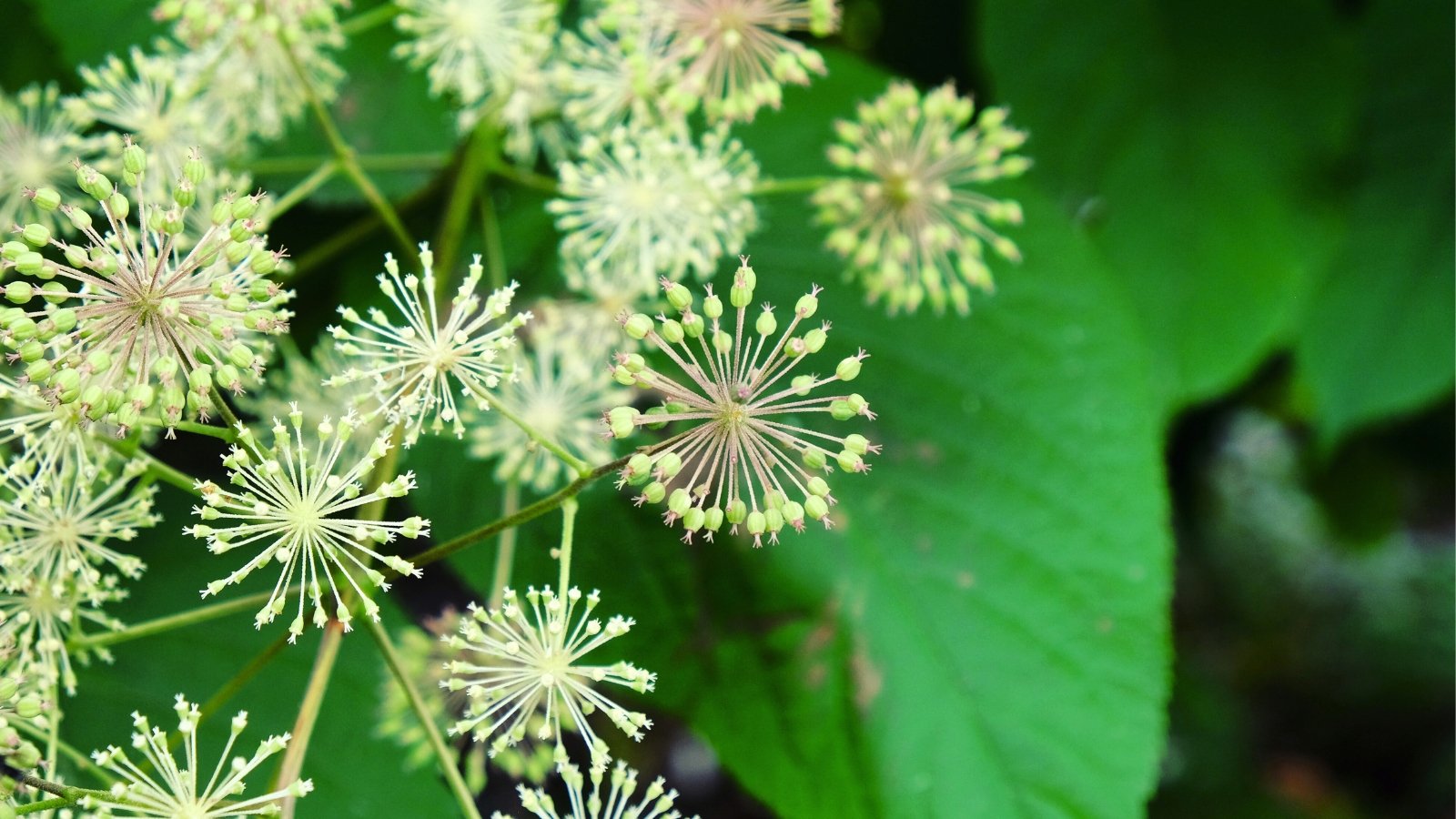
Aralia cordata is native to Korea, Japan, and southeastern China. Plantsmen and collector Barry Yinger introduced ‘Sun King’ to the U.S. after finding the plant on a trip to Japan, not in the wild but for sale in the rooftop nursery of a department store. Yinger propagated the plant through tissue cultures for U.S. cultivation.
Native habitats for Aralia cordata include woodlands and grassy slopes. They grow in well-draining, humusy, moist conditions across a wide range of climates (USDA zones 4-8).
Planting
Aralia and its spreading rhizomes gradually form a clump, though the plant does not sucker or spread aggressively like other selections. When planting, space plants at least three feet apart to allow room for mature growth. Keep plants out of overly windy spaces to protect foliage and stems.
It also grows beautifully in a large container. It requires a well-draining potting mix rich in organic matter, dappled light or shade, and regular moisture.
Transplanting
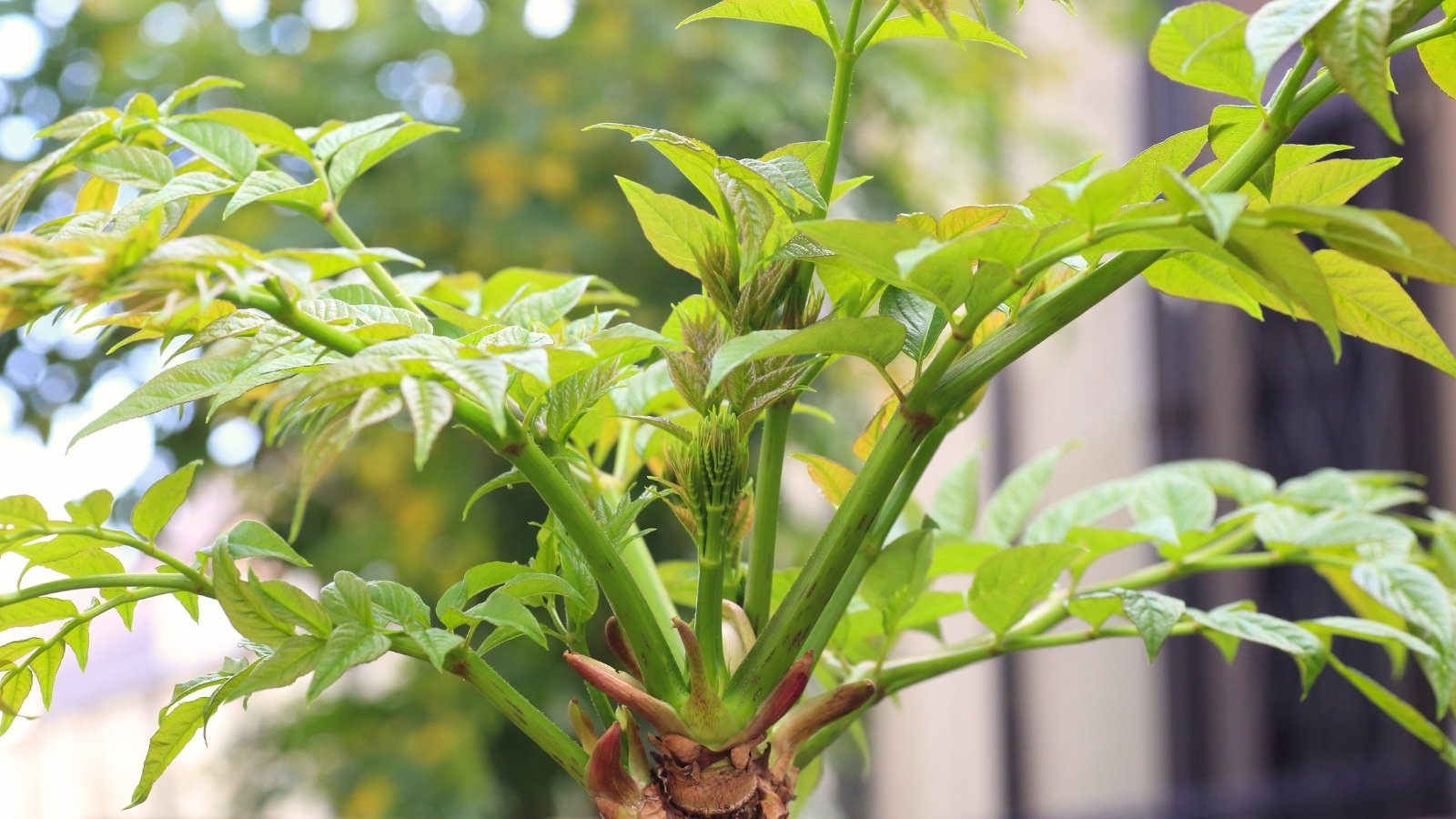
Like most perennials, ‘Sun King’ aralia can be planted year-round, with the best conditions generally in spring and fall. Cool temperatures and seasonal moisture give plants time to establish before winter and summer temperature fluctuations. For the least stress on the new plant, avoid frozen or waterlogged conditions and extreme heat or drought periods.
How to Grow
This is a carefree, unfussy plant with low maintenance needs. Even so, specific cultural requirements, like regular moisture and dappled light, are best for optimal health and flowering.
Light
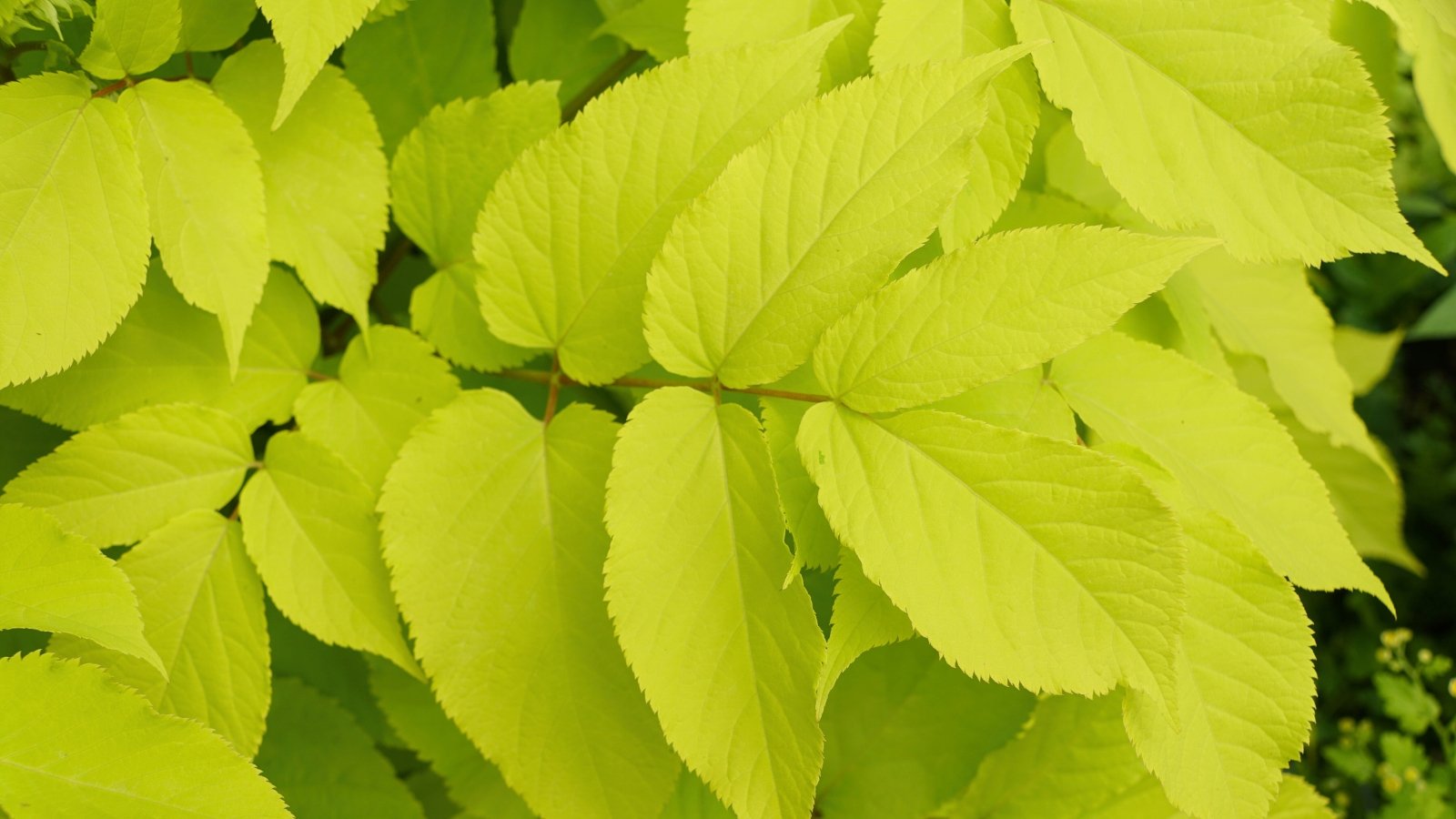
Grow it in partial shade, dappled light, and light, open shade. Morning sun exposure is ideal for maintaining the yellow-gold leaf color. Plants tolerate full shade, taking on deeper chartreuse green tones (still vibrant and richly bright).
‘Sun King’ tolerates more sun in northerly climates, given ample moisture. Plants need protection from direct afternoon rays that scorch and burn leaves. Too much sun may cause leaves to pale and whiten.
Water
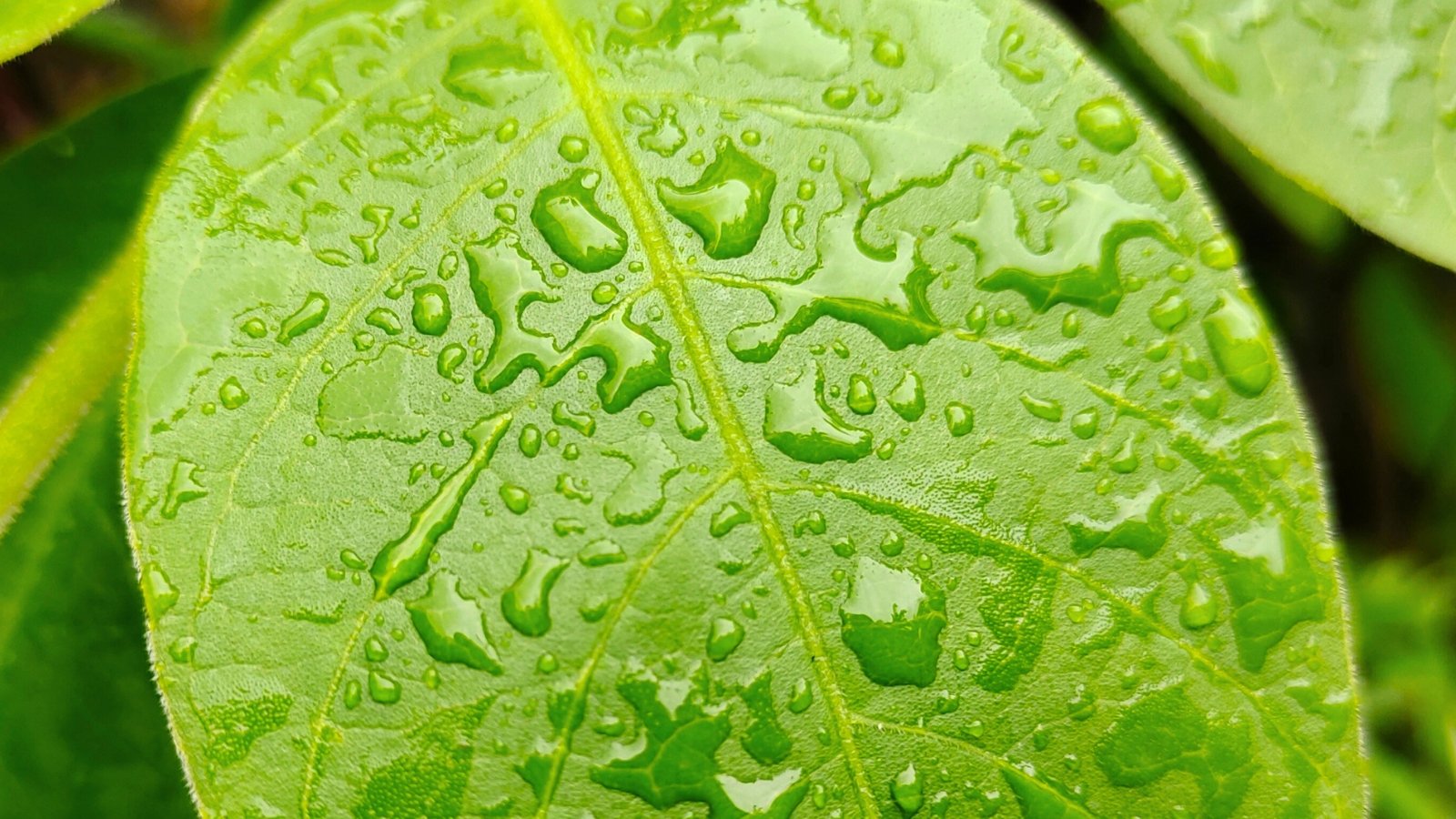
Provide consistent moisture from regular water. Plants don’t withstand long periods of drought, and though they’re somewhat more resistant to short drought conditions once established, moist soils are best for vigorous plants. During dry spells, plant stress causes leaves to drop and invites pests like spider mites.
For plants growing in containers, make sure the pots are well-draining. Check on container moisture often during the warm season since they dry out faster than ground soils and need water more frequently. Reduce watering sessions in the fall when the active growing season slows. Water in the winter only when the soil feels dry to the touch to a depth of an inch (every three weeks or so if needed).
Soil
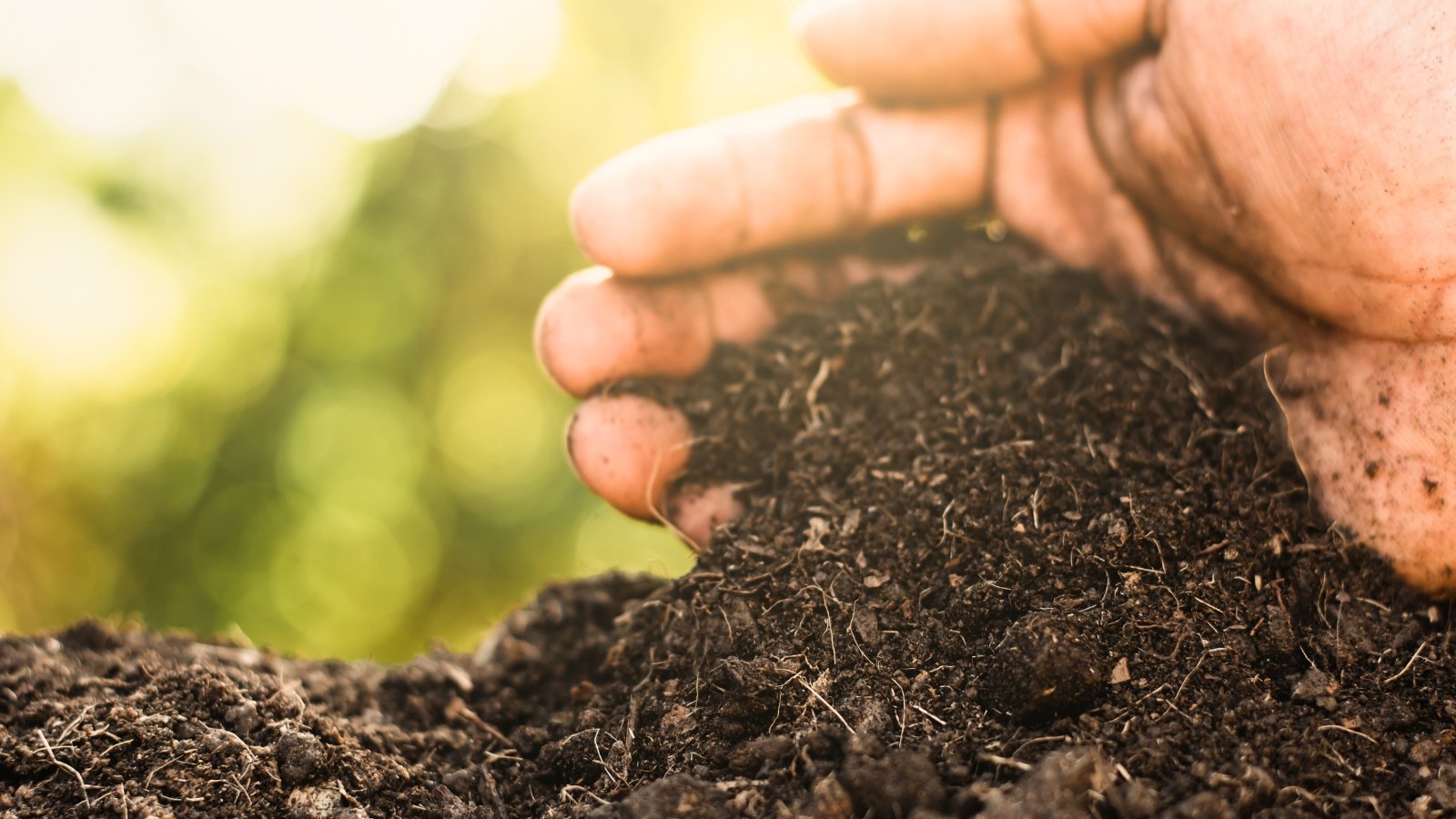
‘Sun King’ aralia grows in a variety of soil types but does best in organically rich and humusy soils. They aren’t picky about pH levels and grow in neutral to acidic soils. They thrive in fertile, well-draining soils with even moisture, mirroring its native woodland floor.
Add compost from completely broken-down plant material at planting, especially in poor soils like clay and sand. Compost helps with aeration, moisture retention, drainage, and nutrition. Adding a compost layer to the garden bed or container each spring refreshes these benefits for the growing season.
Temperature and Humidity
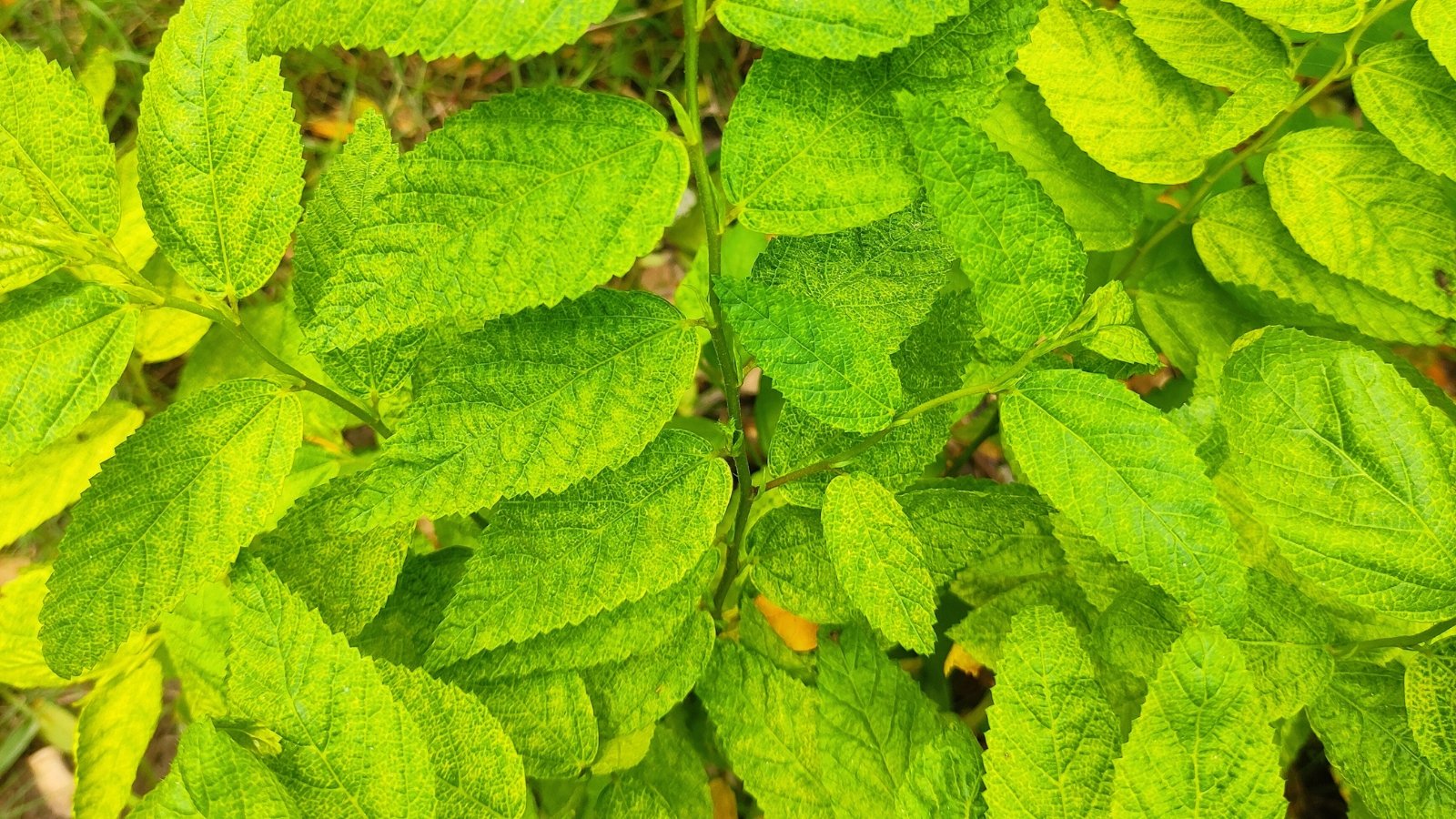
This cold-hardy perennial grows well in USDA zones 4-8. Plants growing in containers benefit from protection from cold winter winds. For best success, overwinter pots in a sheltered space like a garage or basement.
Aralia grows in regions with heat and humidity (zone 8), provided there is plenty of air circulation and moist but not overly wet soil.
Fertilizing
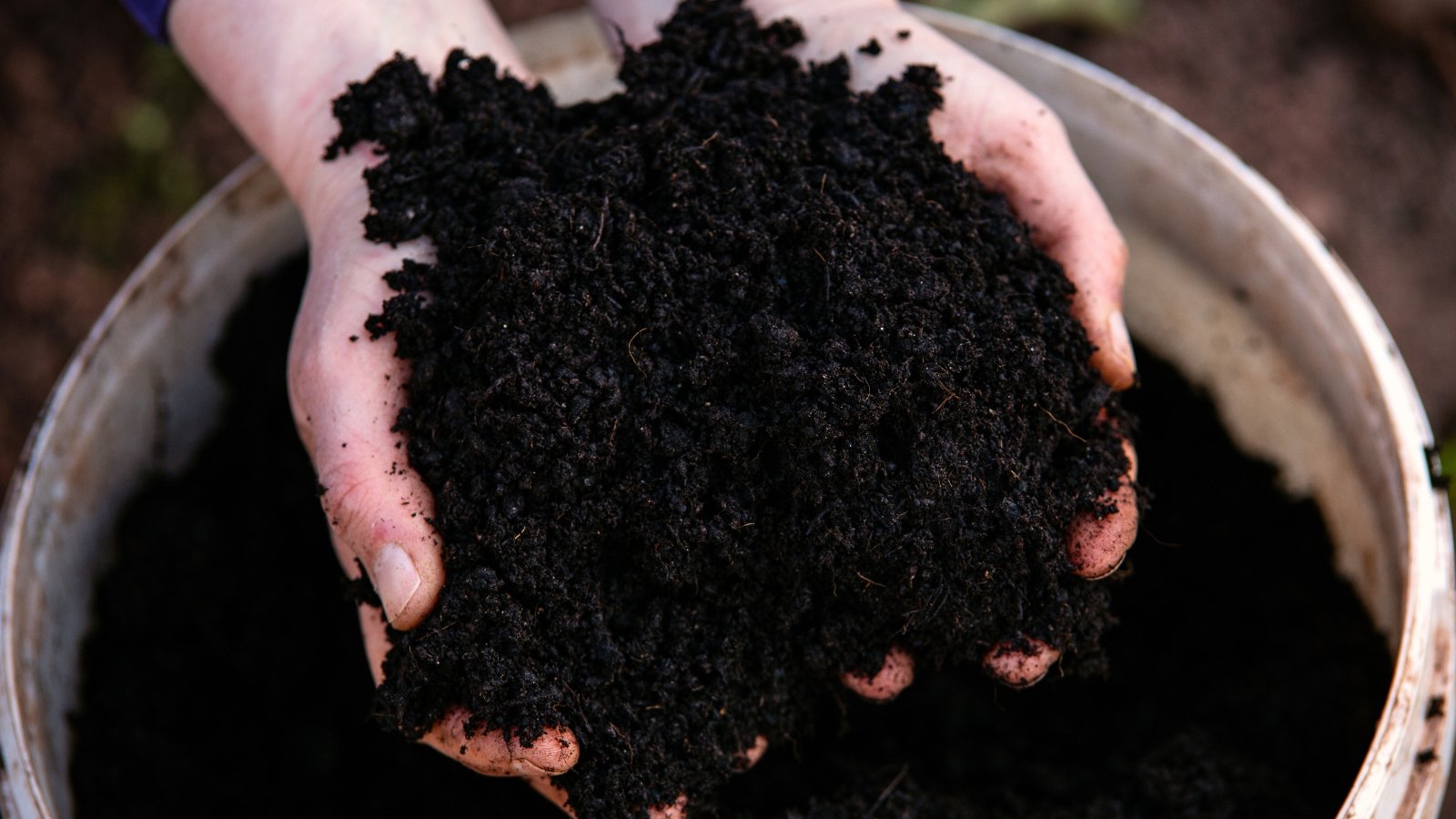
With nutrient-rich, fertile soils, aralia doesn’t require additional fertilizers to thrive. They’ll benefit from fresh compost in the ground and containers each spring. If opting to fertilize in the ground or containers, apply a balanced liquid organic fertilizer like 5-5-5 in early spring before new growth emerges.
Maintenance
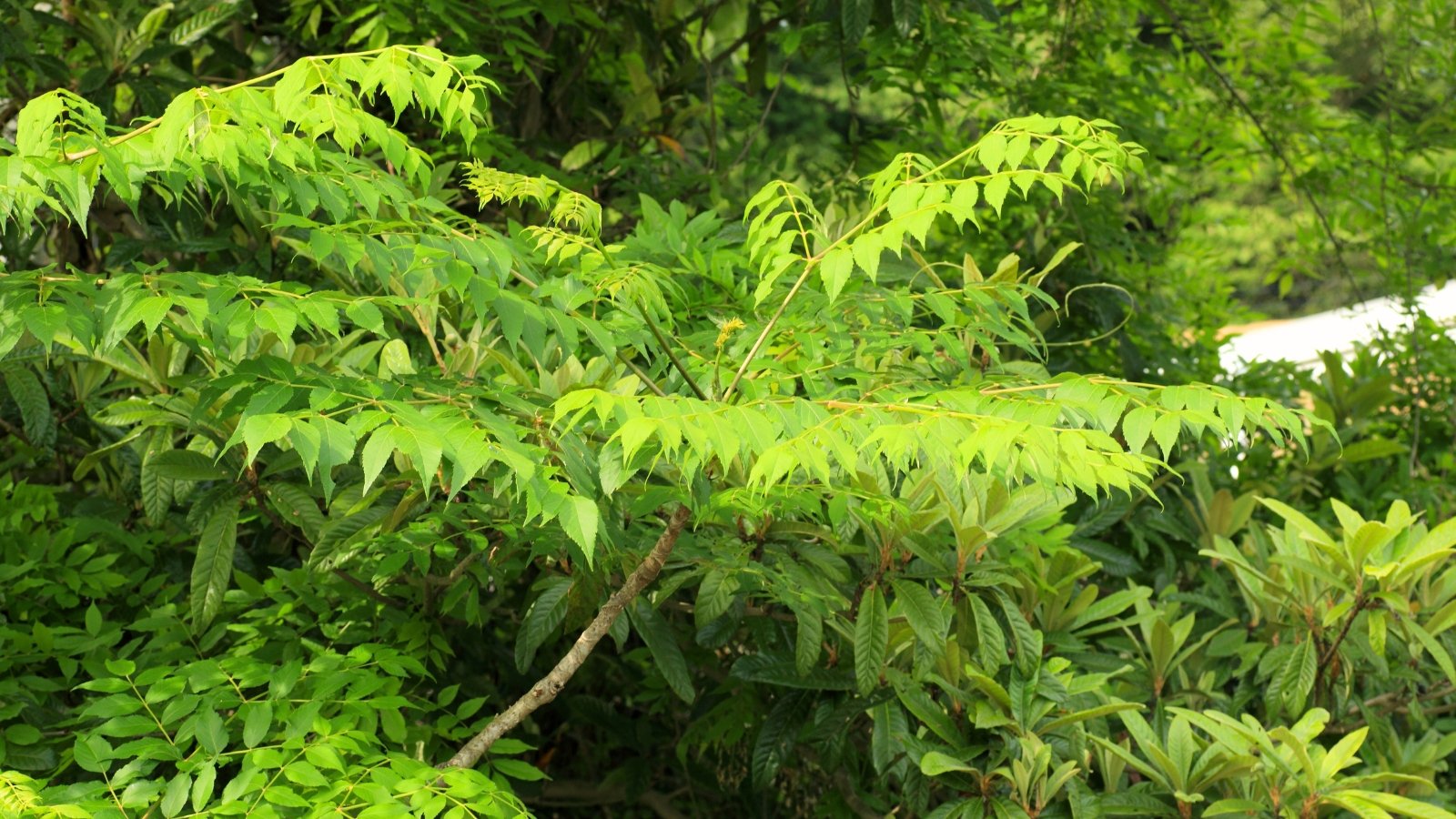
What maintenance? That’s how easy ‘Sun King’ aralia is to tend. If you want to tidy up plants when they’re dormant, remove brown parts in late fall, winter, or early spring before new growth appears. It grows healthily without division unless you want to propagate more plants for the colony.
Propagation
For this clump-forming perennial, dividing plants is the recommended means of propagation. Stem cuttings and growing from seed are other options, though plants from seed may not be true to type.
Division
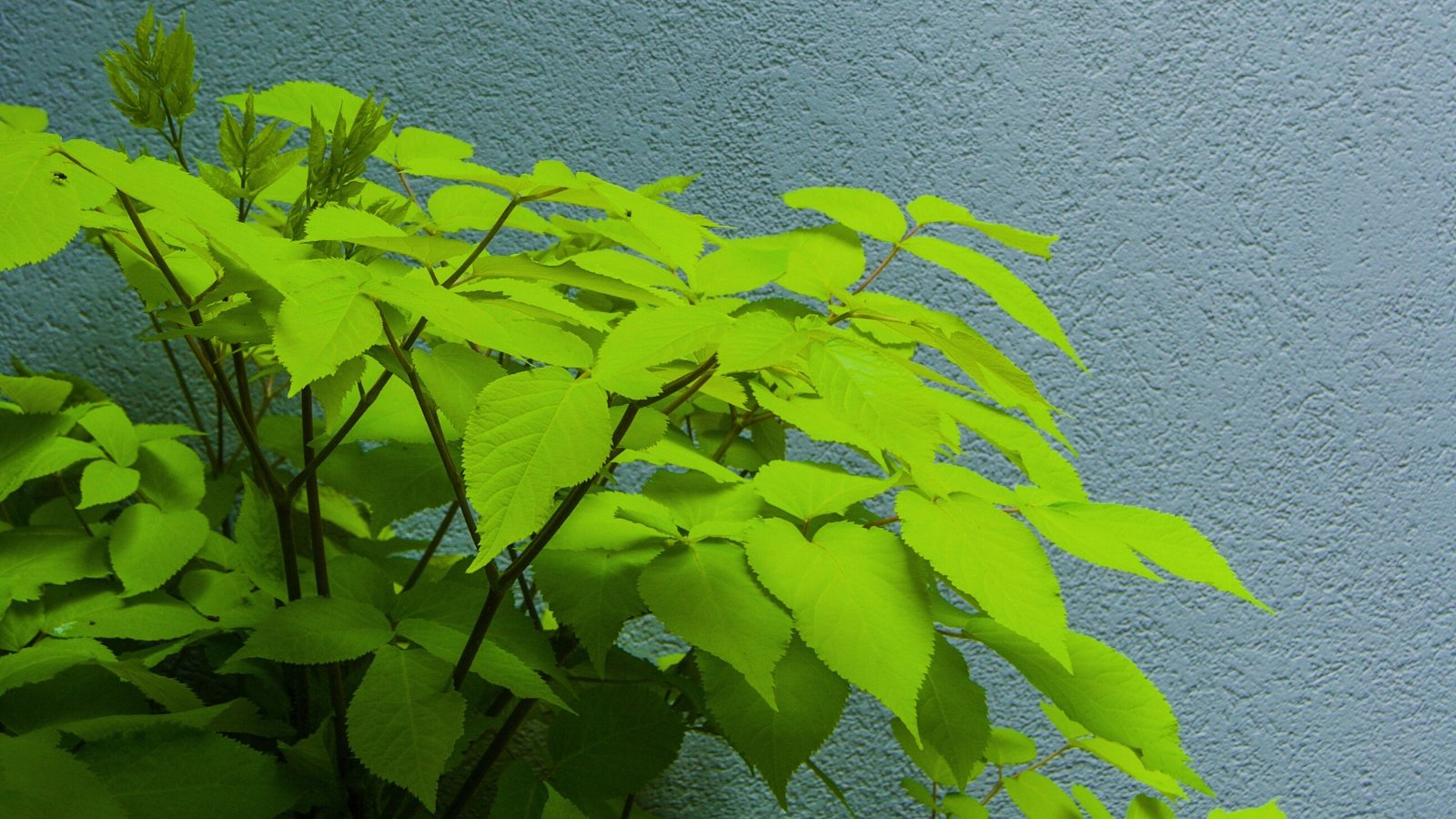
Divide plants in spring or fall by digging up the plant and washing away soil from the roots. Separate rooted segments from the mother plant by loosening them and pulling them apart or using a spade or serrated blade to cut them into segments with roots and leaves. Plant the new divisions in your desired garden spots, keeping them well-watered until established.
Small divisions taken in the fall benefit from winter protection. Consider growing tender new plants in a protected cold frame or container for overwintering before transplanting to the garden in spring.
Cuttings
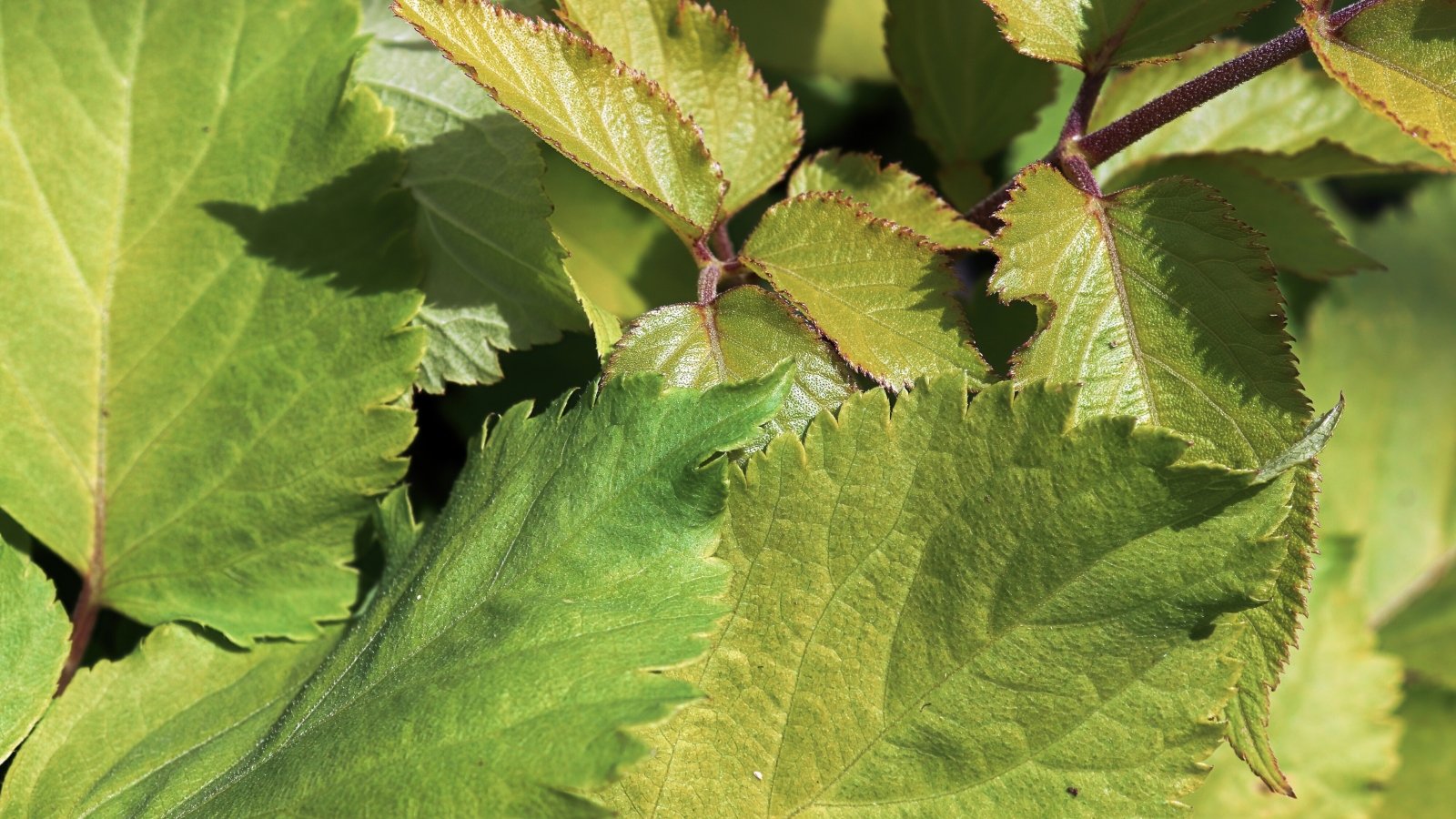
With a few steps, propagating aralia from cuttings is a streamlined process. Here are steps for best practices in taking cuttings:
- Cut a four-to-six-inch piece of healthy stem, including woodier pieces of the aralia stem.
- Remove the foliage from the bottom ⅔ of the cutting (keeping at least two leaves intact). Keep cuttings moist until ready to pot.
- Optional: moisten the cutting and generously coat the lower stem with rooting hormone. Tap off any excess rooting powder.
- Plant the cutting in at least two inches of moist, well-draining potting mix.
- Place the pot in a bright, warm location, avoiding direct sunlight.
- Water as needed, keeping the soil evenly moist.
- When the cutting resists a gentle tug, roots are in place and ready to be repotted.
- Plant the cuttings in four-inch pots and move them outside in mild conditions. New plants will be tender.
Growing From Seed
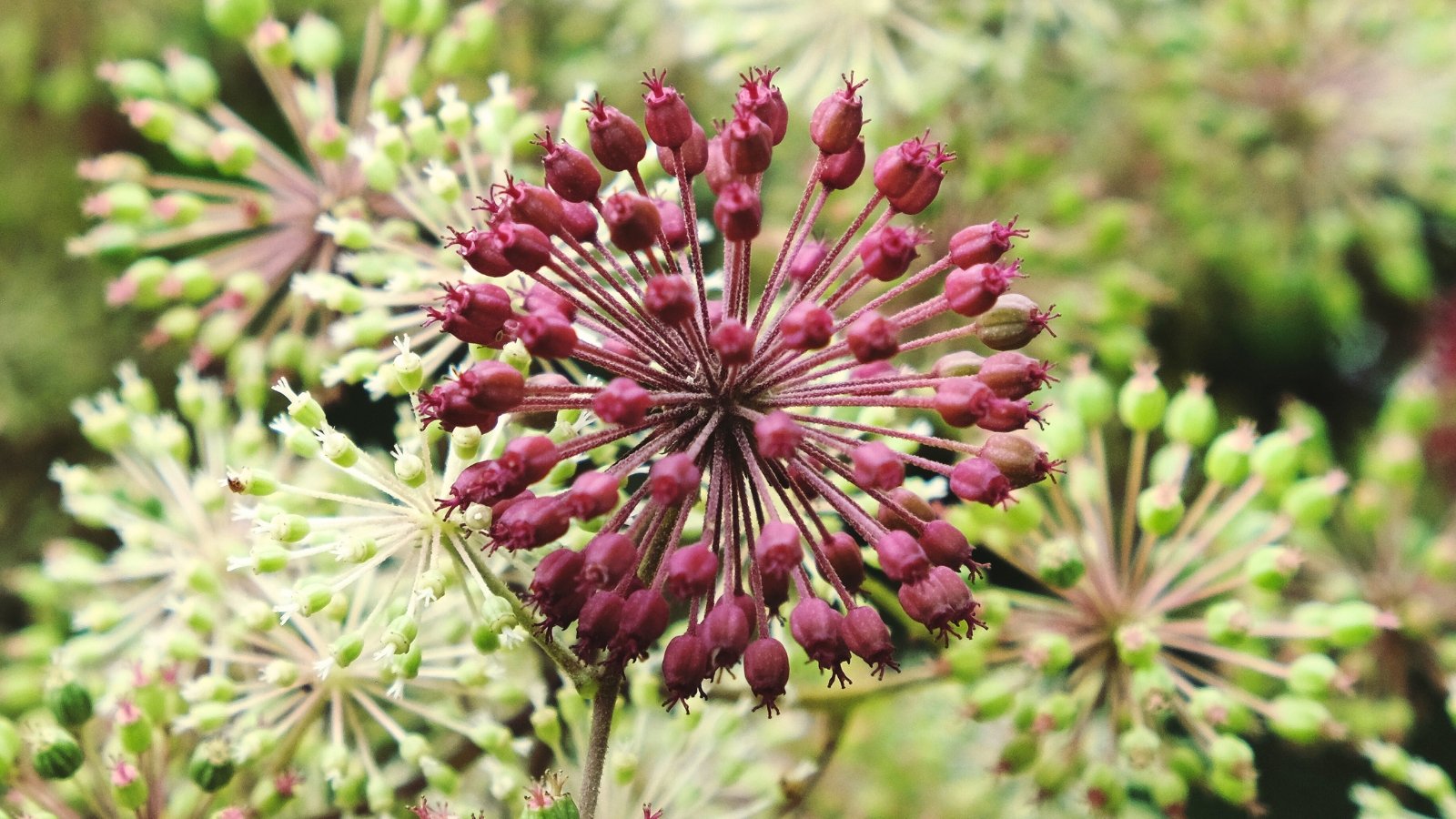
‘Sun King’s’ berries in late summer and fall are easy to collect and direct sow in a prepped garden area, covering them lightly with soil. This variety doesn’t reseed as readily as other species in the genus or necessarily reflect the golden qualities of the parent variety, but it is easy to try if you want more aralias.
Common Problems
This plant is free of most pests and diseases. However, it may occasionally be affected by slugs and snails, aphids, mealybugs, and leaf spot. The best control is prevention through maintaining optimal cultural requirements.
Pests
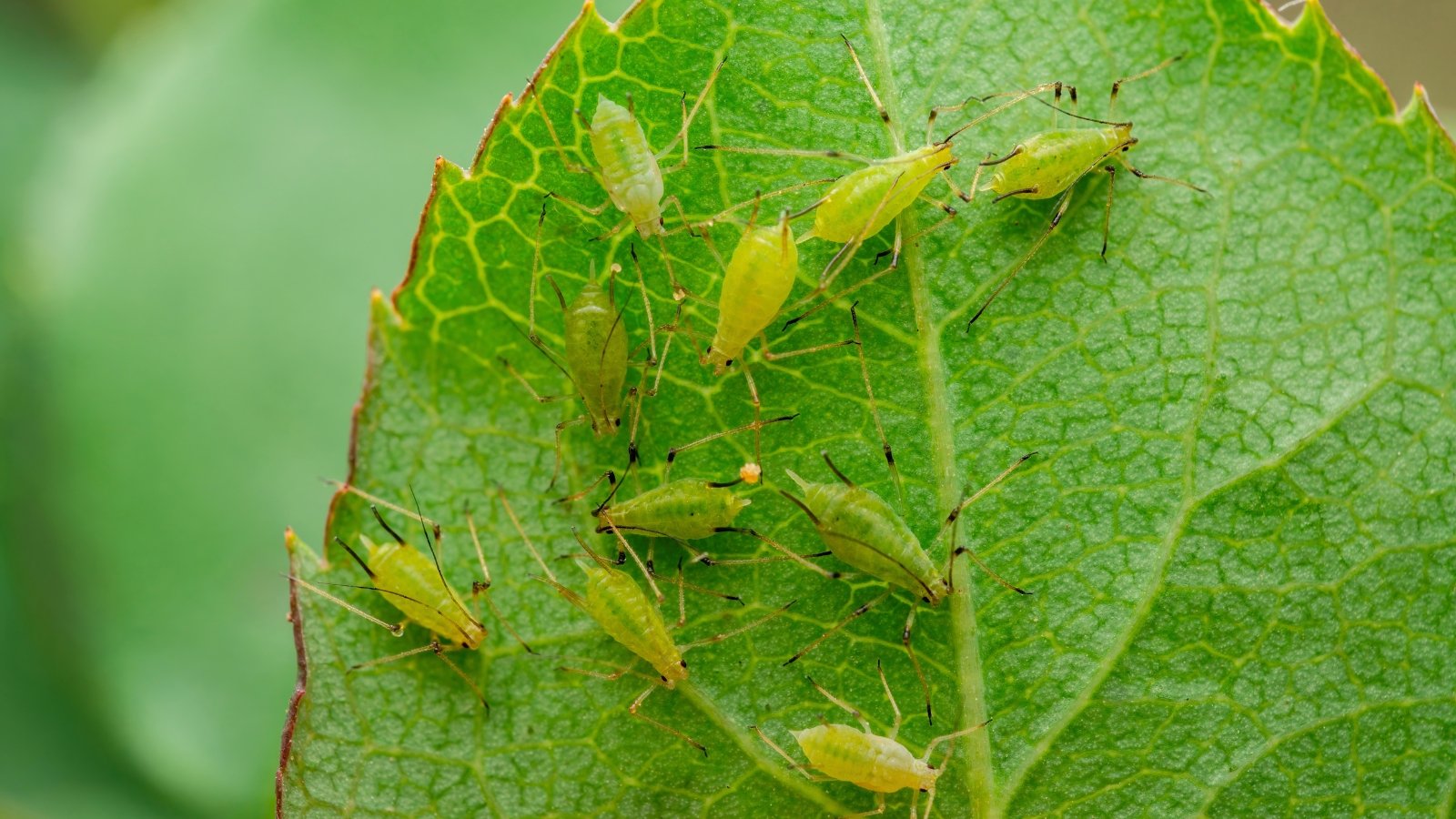
The best way to control insects is to spot them early. You’ll likely see the insects themselves or notice their sticky waste on plants, nibble damage, yellowing leaves, or stunted growth.
Aphids are common garden insects usually treated with non-chemical means. Often, they cause no plant damage, but severe infestations cause plant stress. Signs of stress include curled leaves and stunted growth. A strong stream of water should knock them off your plant.
Mealybugs are soft-bodied, sap-sucking insects that look like tiny tufts of white cotton inhabiting our plants. Infestations are visible by the masses of insects and by yellowing, wilting, or stunted leaves. Use a cotton swab dipped in 70% or less rubbing alcohol to manually remove them. Insecticidal soap is a good follow-up treatment if manual removal is ineffective.
Spider mites live on the undersides of leaves, indicated by webbing and light yellowing of leaf surfaces. Beneficial predatory insects like ladybugs and predatory mites help control populations.
Slugs and snails may be unwelcome visitors to aralia. Set beer or soda traps (dishes of beer or Coke that entice the slugs to swim) at soil level, or manually pick off the pests in the morning if you see damage.
Diseases
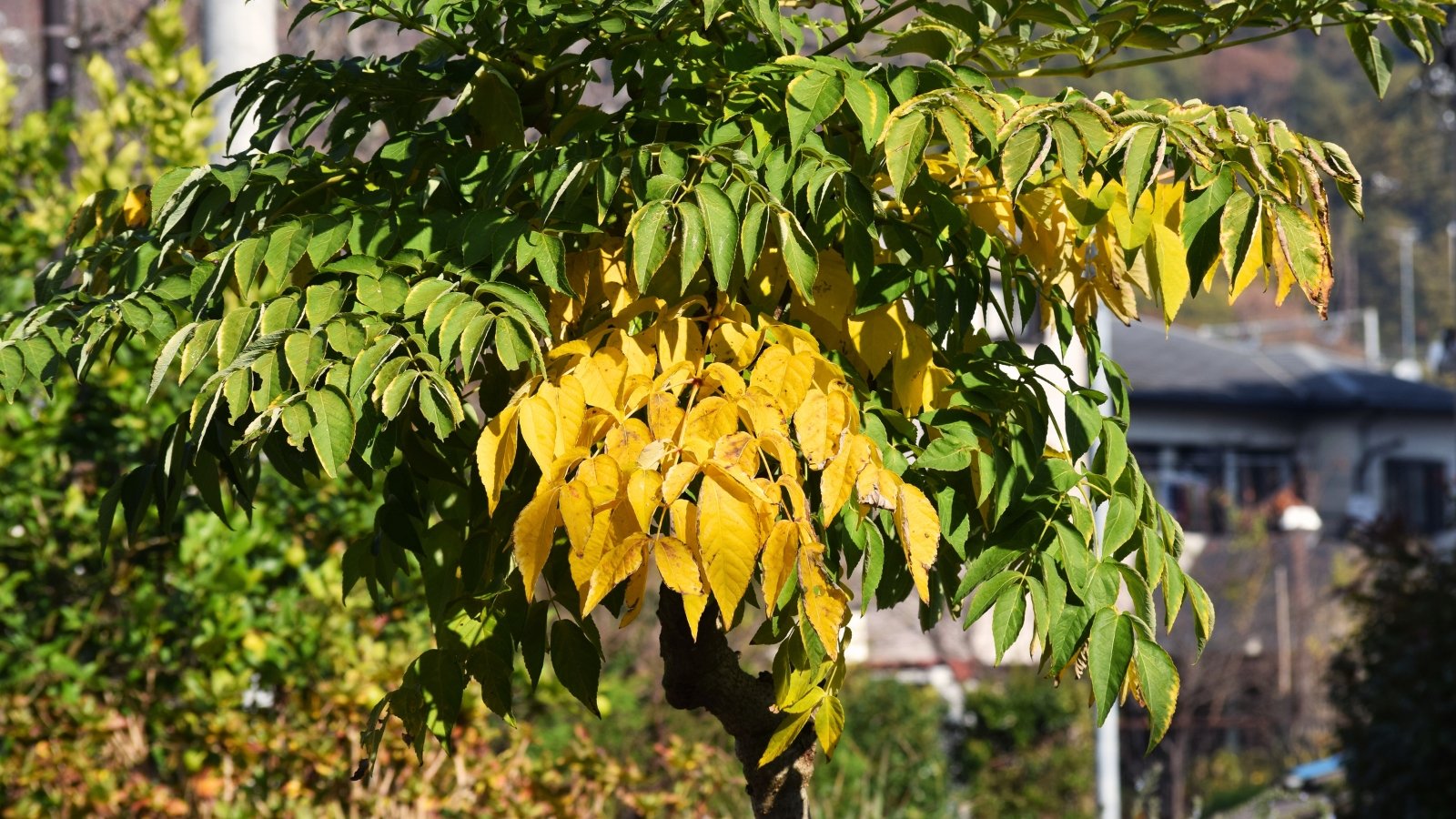
As with pests, the best disease control is prevention through cultural conditions, mainly by providing adequate (but not excessive) moisture and air circulation. In general, remove problem plants from the garden to minimize chemical treatments and promote the health of surrounding plants.
Leaf spot is a fungal infection that manifests in yellow leaf spots in spring, which transition to red in summer and black in the fall. To treat leaf spot, remove damaged leaves (including fallen leaves).
Frequently Asked Questions
It is an excellent shade garden specimen. It prefers partial sun (especially morning sun) to light, open shade. With more sun, the leaves have a golden-yellow aura. Foliage turns a deeper chartreuse tone in heavier shade.
Yes, it grows beautifully in containers. Ensure pots are large enough to accommodate root growth for these vigorous perennials. Use a well-draining potting mix and topdress with compost each spring. Provide regular moisture since containers dry out more quickly than in-ground plantings.
This cultivar is not invasive and does not spread aggressively through suckering or reseeding like some other Aralia species. It’s well-behaved in the landscape and showy as a focal point or massed planting.
Final Thoughts
‘Sun King’ aralia is an excellent choice for a glow in the shady border, woodland planting, or dark garden corner. Its fresh foliage beautifully foils other shade-loving perennials, especially those with dark or variegated foliage. Blue, coral, purple, and white blooms stand out with this perennial as a backdrop.
With three seasons of garden interest, pollinator-attracting blooms, and deer resistance, ‘Sun King’ is a high-value garden perennial. Its carefree nature makes it an enduring performer and shade garden favorite.




